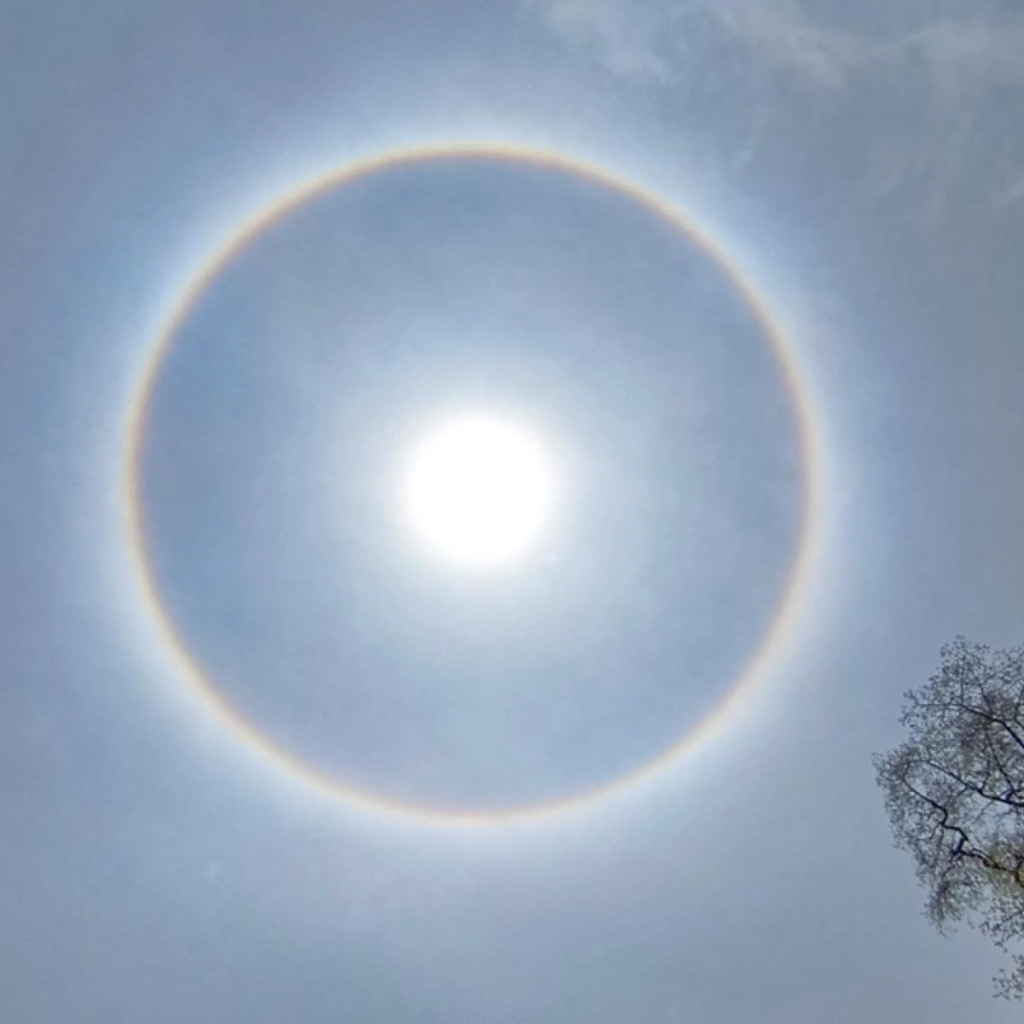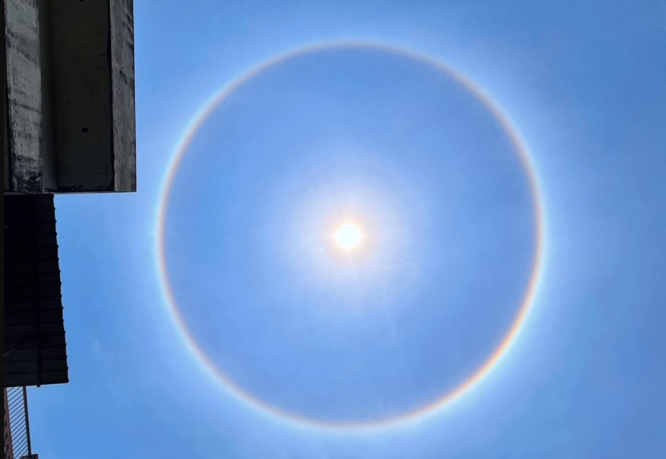A scientist captured a succession of brilliant arcs and halos of light around the sun in the sky over the U.K., including an unusual ring of light that circled the sky.
The extraordinary light show over Belfast’s Botanic Gardens was photographed on May 28 by Queen’s University Belfast astronomer Alan Fitzsimmons. Live Science reported Fitzsimmons’ 30-minute show.
According to Spaceweather.com, the strange glowing beams were also seen in northern England, Scotland, and other regions of Northern Ireland.
The arcs and halos are generated by millions of small, precisely positioned ice crystals in the high atmosphere, which typically accompany thin cirrus clouds, Fitzsimmons added.
“If the winds are very uniform up there, the hexagonal-shaped crystals align,” he continued. “This allows the sunlight refracting through them to combine, just as light refracts through a prism, producing arcs and circles of sunlight.”

The sun’s ethereal “halo” and light arcs.
Fitzsimmons’ image shows at least three optical phenomena: a 22-degree halo, the large circle surrounding the sun; two “sundogs,” the bright points on either side of the halo; and a complete parhelic circle, the line that bisects the circle and forms a full circle around the sky.
Spaceweather.com states that a full parhelic circle requires at least five internal reflections from millions of ice crystals catching sunbeams concurrently.
A confined halo and supralateral arc may create the “eyelids” above and below the 22-degree halo in the photos.

Fitzsimmons noted the image’s most “impressive feature” is the parhelic circle. He said that he had only seen it twice previously. However, the other occurrences are more widespread than most people think.
“To notice them, you need to block out the sun with your thumb or a tree,” Fitzsimmons remarked. “But anytime it’s sunny with high-altitude wispy clouds, it’s worth taking a look to see if there is a halo or maybe something more.”
On May 30, a Finnish photographer captured a pollen corona, a rainbow-colored ring around the sun. Light reflecting off pollen grains in the air creates these rings, which are hard to see until part of the sun is obscured.
Polar stratospheric clouds, which shine like rainbows in the Arctic, and night-shining clouds (also called noctilucent clouds) will become more visible in the Northern Hemisphere in June and July due to tiny atmospheric ice crystals.

